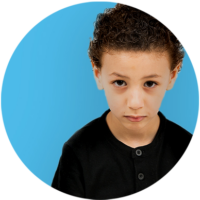
This topic guide has been written by Professor Andrea Danese, Consultant Child & Adolescent Psychiatrist, and Dr. Patrick Smith, Consultant Clinical Psychologist. Credit to the National and Specialist Anxiety and Traumatic Stress Clinic, Michael Rutter Centre, Maudsley Hospital.

Professor Andrea Danese is Professor of Child & Adolescent Psychiatry at the Institute of Psychiatry, Psychology and Neuroscience at King’s College London. He is also Honorary Consultant Child and Adolescent Psychiatrist at the National and Specialist CAMHS Clinic for Trauma, Anxiety, and Depression at the South London & Maudsley NHS Foundation Trust.
The research from his team focuses on childhood trauma, and he has published widely on the consequences of childhood trauma, the biological mechanisms through which childhood trauma affects health, the mechanisms of resilience, the reversibility of biological liability linked to trauma, and treatment of trauma-related psychopathology. Dr Danese is also Consultant Child & Adolescent Psychiatrist of the National & Specialist Child Traumatic Stress & Anxiety Clinic, at the Maudsley Hospital, London, UK. This is a top-tier clinic for children with complex histories of trauma victimisation and treatment resistance. The clinic has also been advising the UK Department of Health on public health strategies and clinical response to emergencies.

Dr Patrick Smith is a Reader in Child Clinical Psychology at the Institute of Psychiatry, Psychology and Neuroscience at King’s College London. He is also Honorary Consultant Clinical Psychologist at the National and Specialist CAMHS Clinic for Trauma, Anxiety, and Depression at the South London & Maudsley NHS Foundation Trust.
His collaborative research has focused on understanding children’s psychological reactions to trauma, and on developing individual and group interventions for traumatised young people. With colleagues and students, he has investigated cognitive models of PTSD in children, and has evaluated Cognitive Therapy for PTSD (CT-PTSD) in children and young people in randomized controlled trials. He is currently leading a project, funded by the Medical Research Council, to develop and trial internet-delivered CT-PTSD for young people. He is a longstanding Board member of a charity, the Children and War Foundation (www.childrenandwar.org), and in this role has helped to develop and evaluate a CBT-based group intervention for children exposed to war and disasters.
Most children and young people (hereby children) experience at least one traumatic event before age of 18 years. A sizeable minority of children exposed to trauma will develop symptoms including re-living of the trauma, avoidance strategies, and physiological hyper-arousal. When these symptoms persist for more than one month after trauma and are impairing, they indicate a diagnosis of Post-Traumatic Stress Disorder (PTSD). It is important to identify and treat PTSD because many children fail to recover from the symptoms without treatment. Trauma-Focused Cognitive Behavioural Therapy is the treatment with the strongest evidence based in children and is often effective. Eye Movement Desensitisation and Reprocessing (EMDR) can also be helpful. There is no clear evidence to support use of medications for treatment of PTSD in children, but medications may be very helpful to treat other psychiatric problems (e.g., depression, anxiety) that often accompany PTSD.




